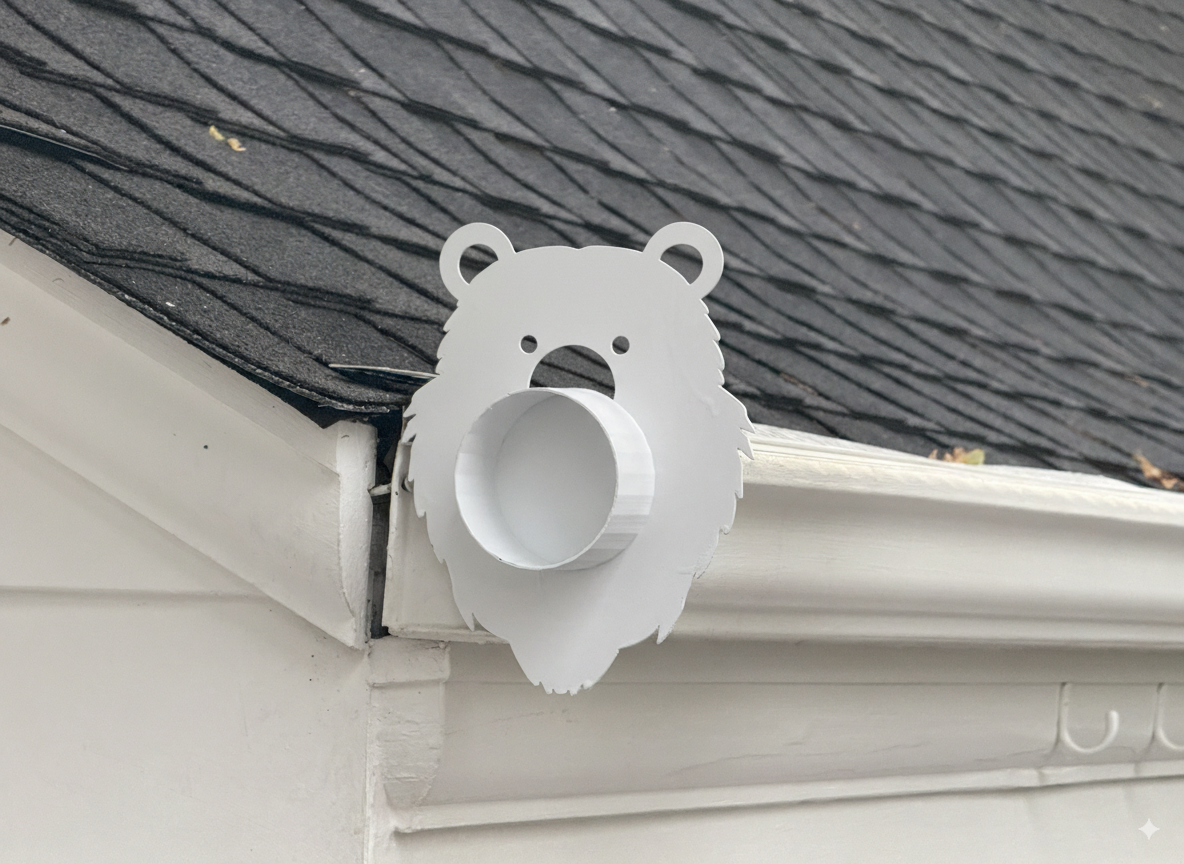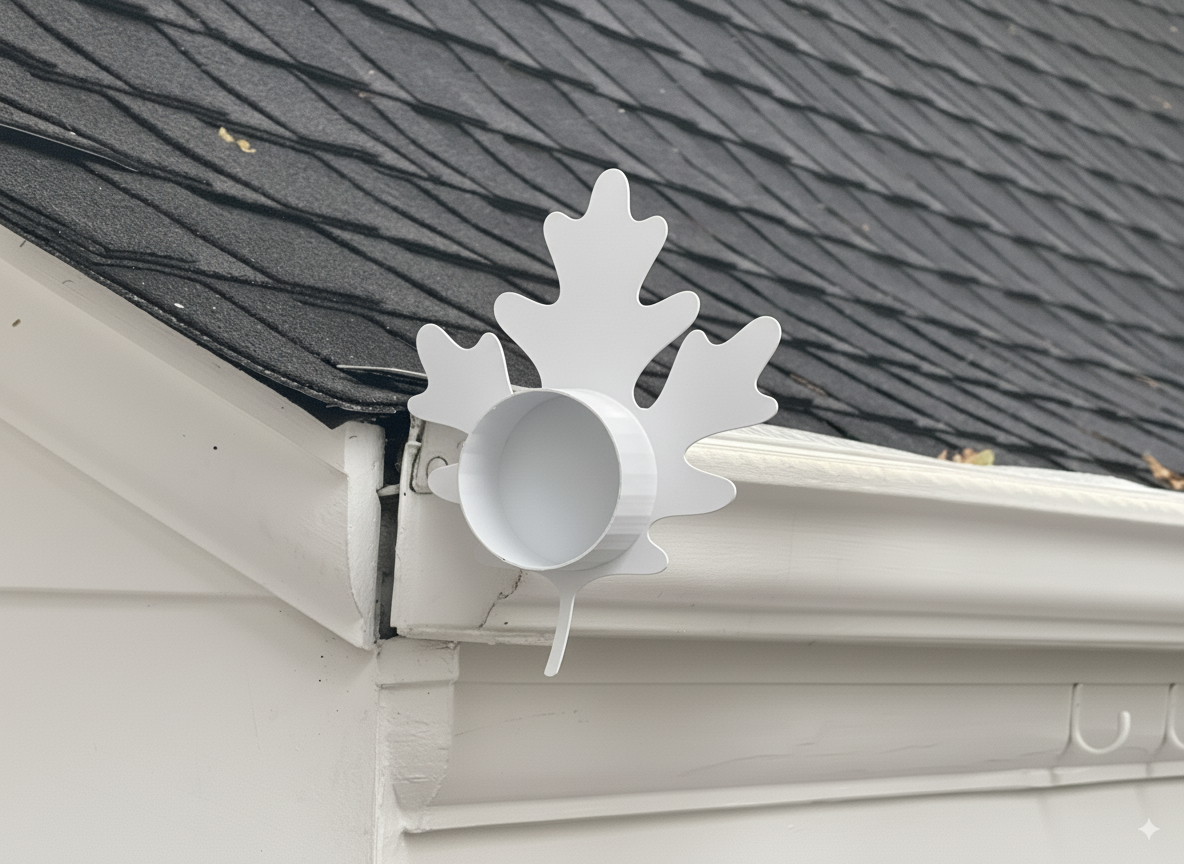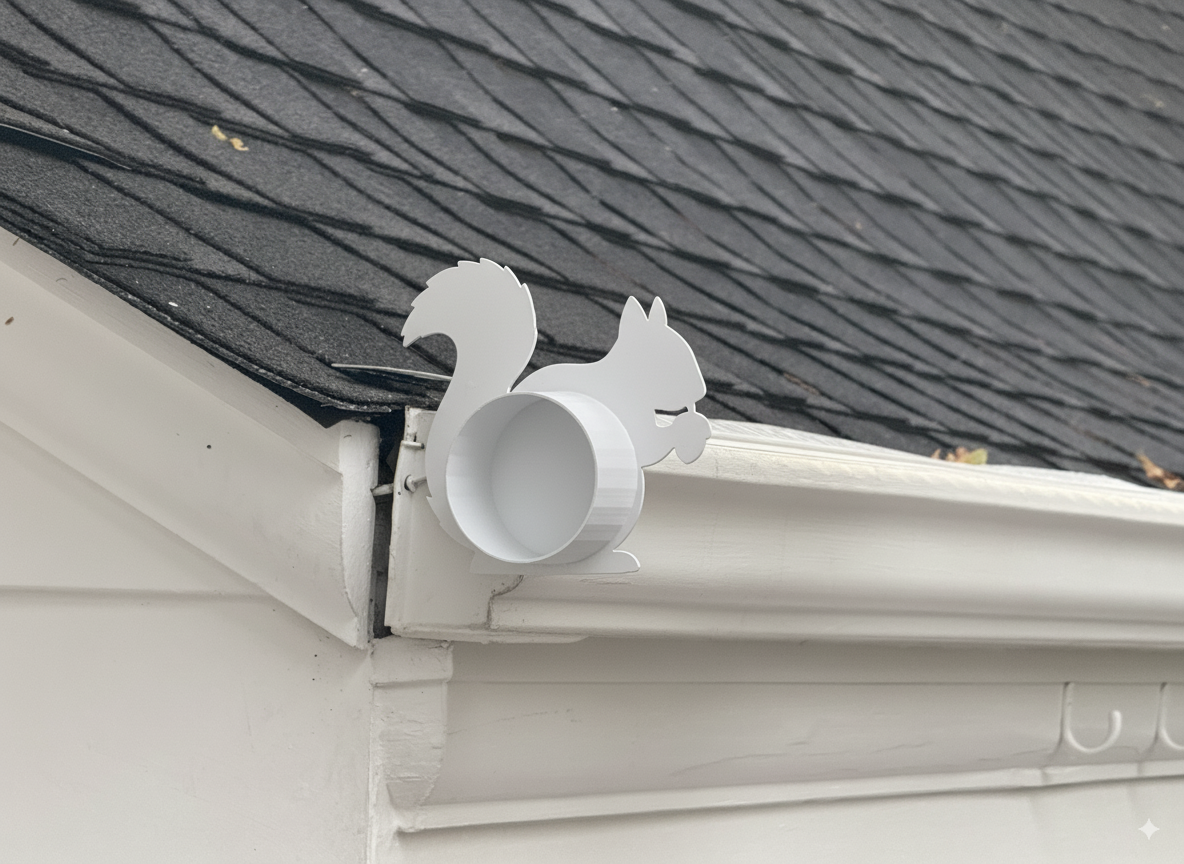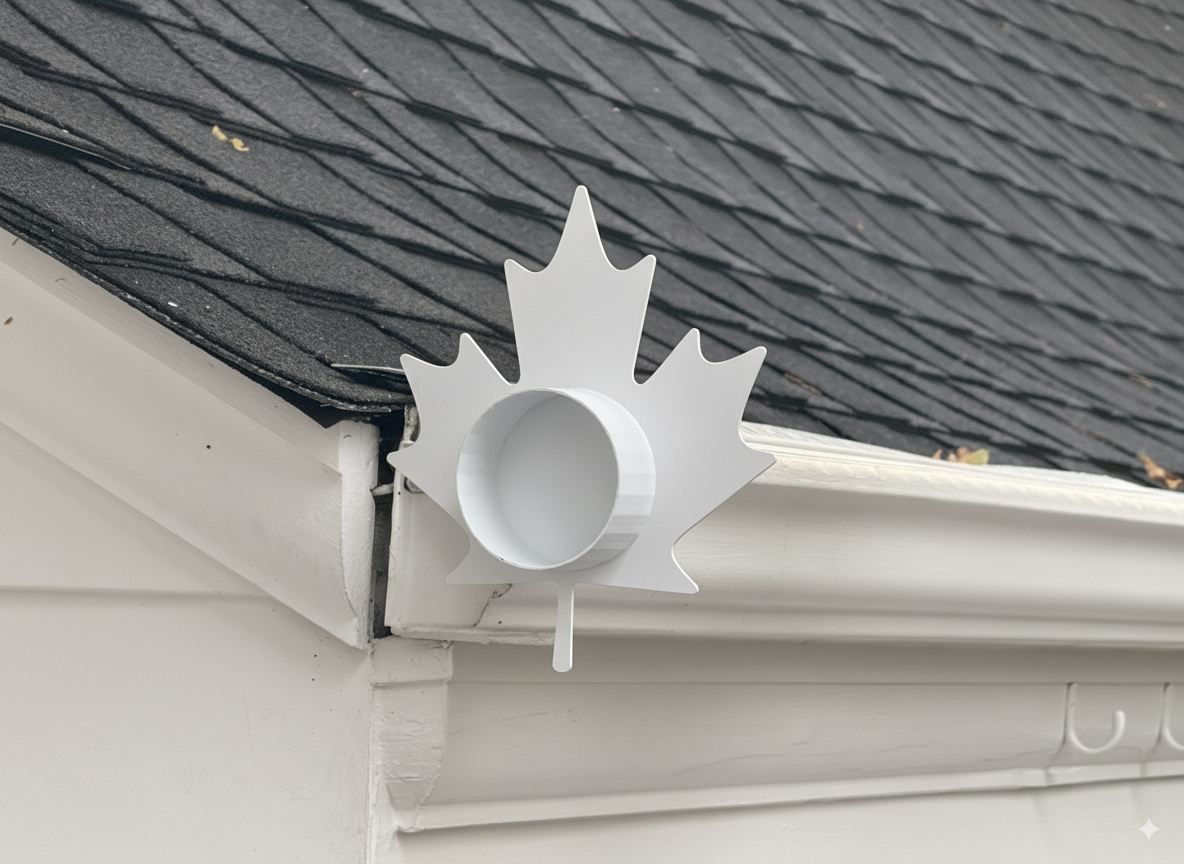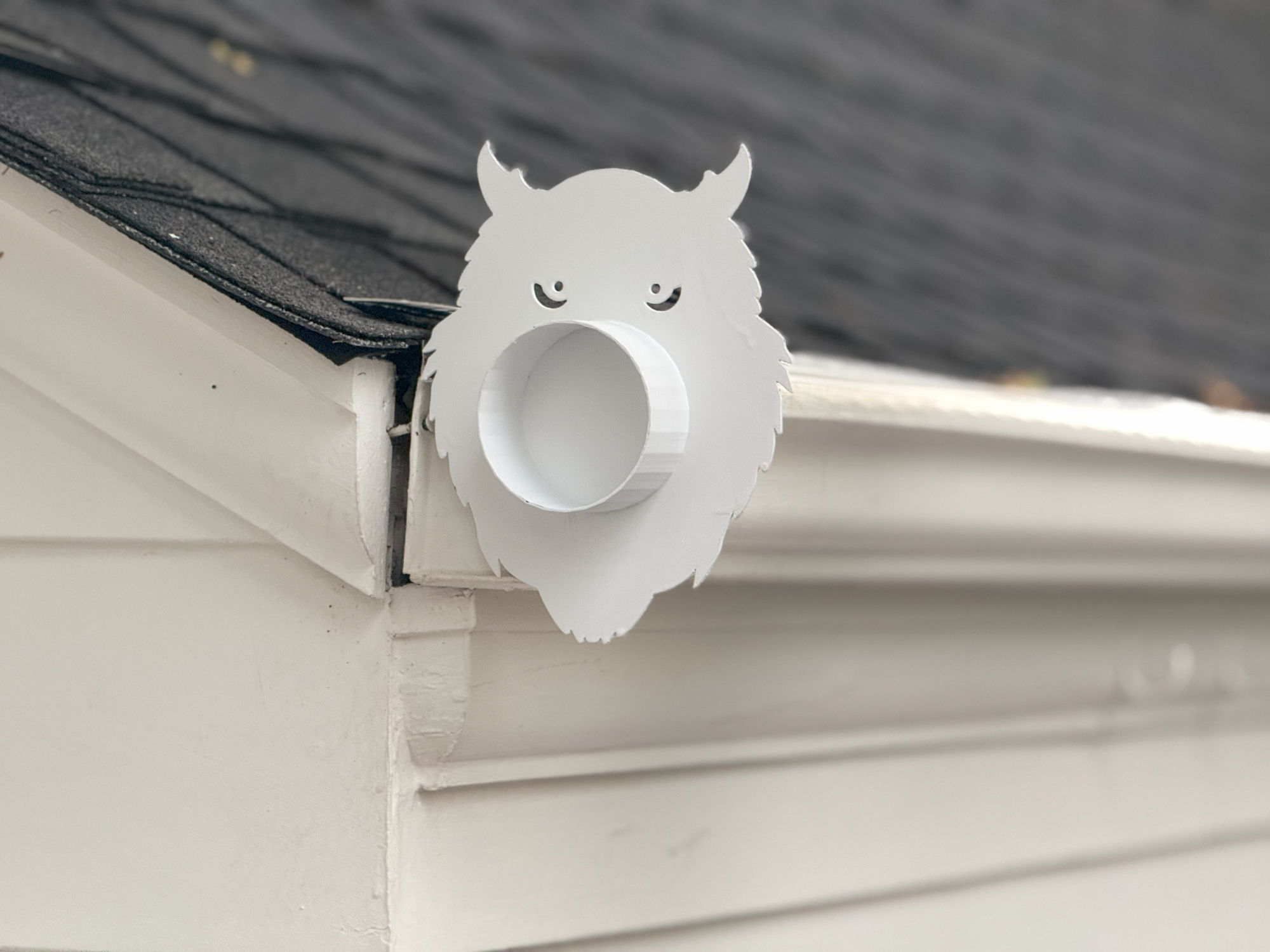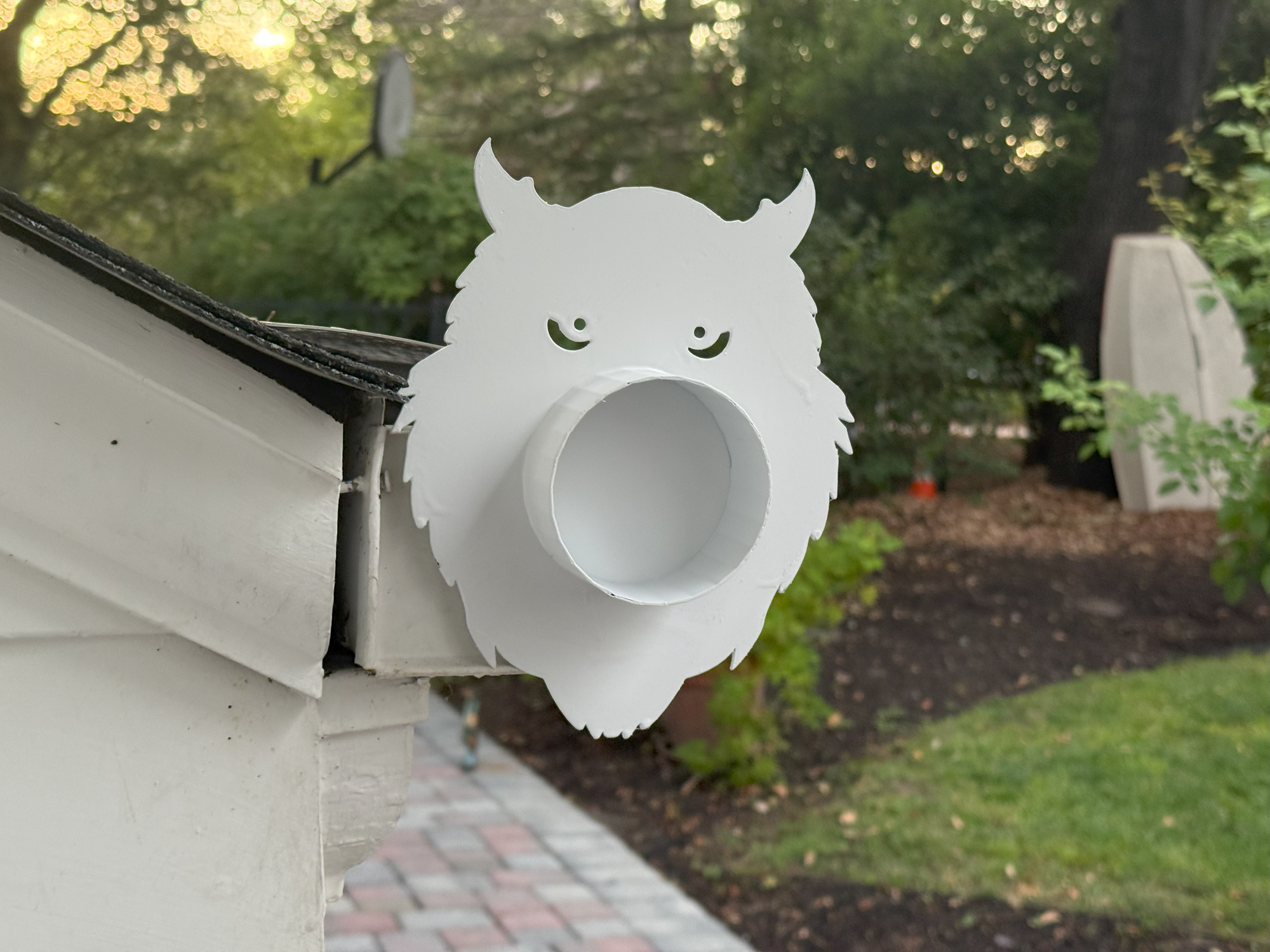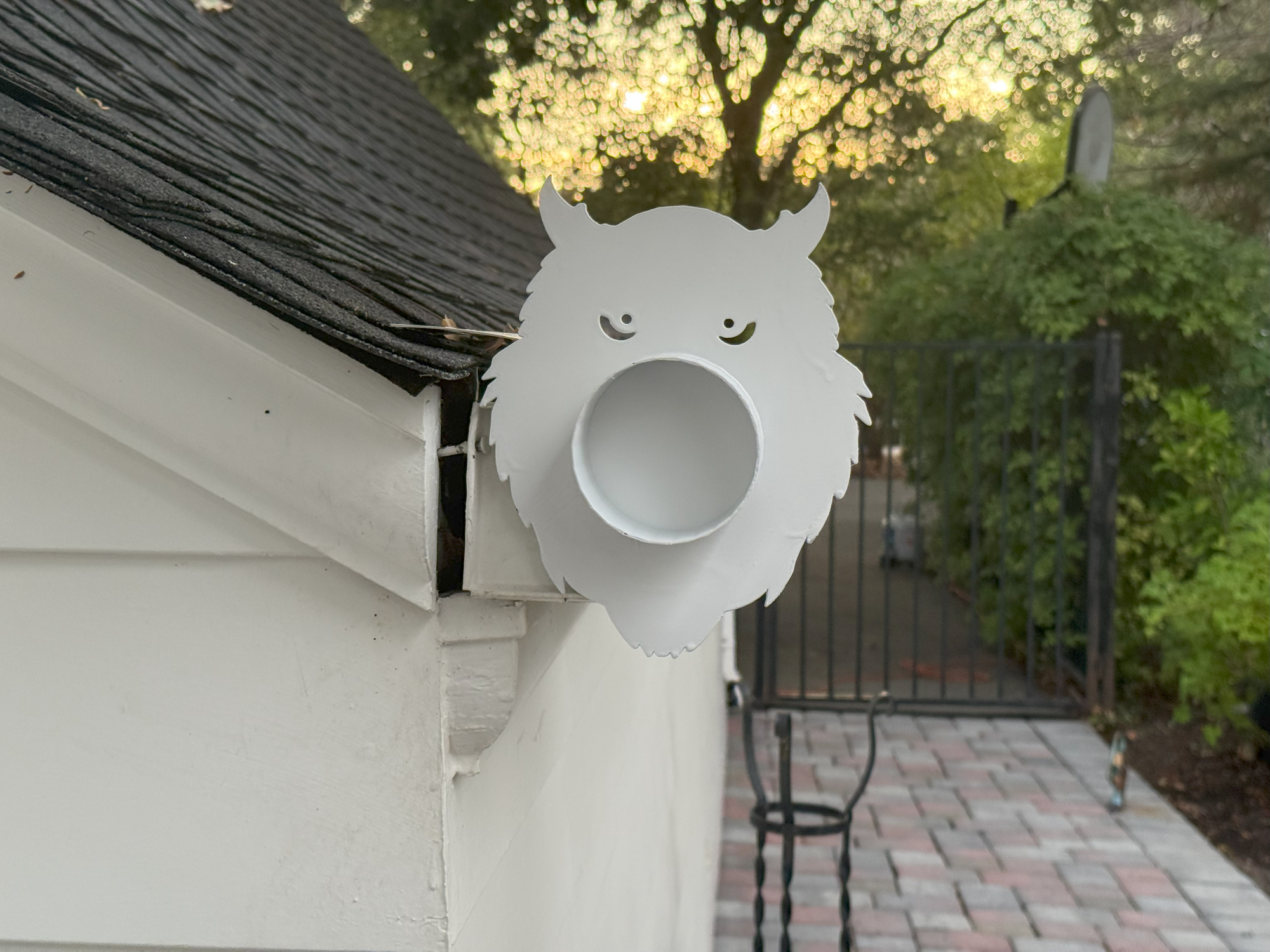
From Gargoyles to Pinecones: The Surprising History of Decorative Gutter Ornaments
When you look up at a roofline, gutters aren’t usually the first thing you notice. But on some homes—like my parents’ 1930s house—you’ll see something special: decorative silhouettes shaped like animals and leaves perched at the ends of the gutters. These details aren’t just quirky modern inventions. They trace their lineage back centuries, connecting today’s homes with deep architectural traditions.
Gargoyles and Grotesques: Medieval Origins
The story starts in medieval Europe, where stonemasons carved gargoyles into cathedrals and castles. These fantastical beasts weren’t just meant to frighten away evil spirits—they doubled as waterspouts, projecting rainwater far from the building’s stone walls to prevent erosion.
Alongside gargoyles were grotesques—decorative carvings with no functional purpose. Both showed that even practical details like water management could be transformed into art.
Rain Chains and the Japanese Approach
On the other side of the world, Japanese builders developed kusari-doi, or rain chains. Dating back centuries, these elegant chains of cups guided water from the roof to the ground. They were practical, but also beautiful to watch in action, turning a rainstorm into an architectural feature.
Like gargoyles, rain chains reveal a long-standing idea: rainwater doesn’t have to be hidden—it can be celebrated.
Victorian Whimsy and Industrial Craft
By the 19th century, with the rise of mass-produced cast iron and tin, gutters and downspouts became more widespread. The Victorian era, famous for its playful ornamentation, brought a wave of embellishment to homes. Drain boots, downspouts, and brackets were cast with floral scrolls, lions’ heads, and national emblems. Utility and decoration once again walked hand in hand.
Early 20th Century: From Craftsmanship to Suburbs
The Arts & Crafts movement of the early 1900s emphasized natural motifs—leaves, pinecones, and animal forms. By the 1930s, when my parents’ home was built, homeowners could buy stamped-metal silhouettes shaped like owls, squirrels, or maple leaves to attach at the ends of their gutters.
These ornaments were a small but personal touch—bringing character to homes at a time when mass housing was becoming more common. They balanced practicality with artistry, echoing both Gothic gargoyles and Japanese rain chains in their intent.
The Modern “Silhouette” Style
The flat, animal- or leaf-shaped gutter ornaments most people recognize today are a 20th-century adaptation of those older traditions. As sheet-metal stamping, laser cutting, and now 3D printing became common, it became inexpensive to produce whimsical shapes that fit neatly over existing gutter end caps.
Common motifs—bears, owls, squirrels, pinecones, maple leaves, oak leaves—evoke nature and symmetry, making them ideal for cottages, cabins, and traditional homes alike.
Today’s Revival: Old Idea, New Materials
- 3D-printed ASA: UV-stable, weather-resistant, and available in standard gutter colors.
- Premium solid copper: Patinas naturally into a rich verdigris, echoing traditional craftsmanship.
- Customization: Monograms, logos, state outlines, and regional wildlife can be cut or printed on demand.
Why Decorative Gutter End Caps Still Matter
From medieval gargoyles to 1930s stamped-metal silhouettes, these ornaments remind us that functional doesn’t have to mean plain. Something as simple as a gutter end cap can carry history, symbolism, and personality.
Today, when many homes are built from the same blueprints, small details like a pinecone or owl silhouette at the gutter’s edge are a chance to stand out—tying our modern houses to centuries of tradition.






